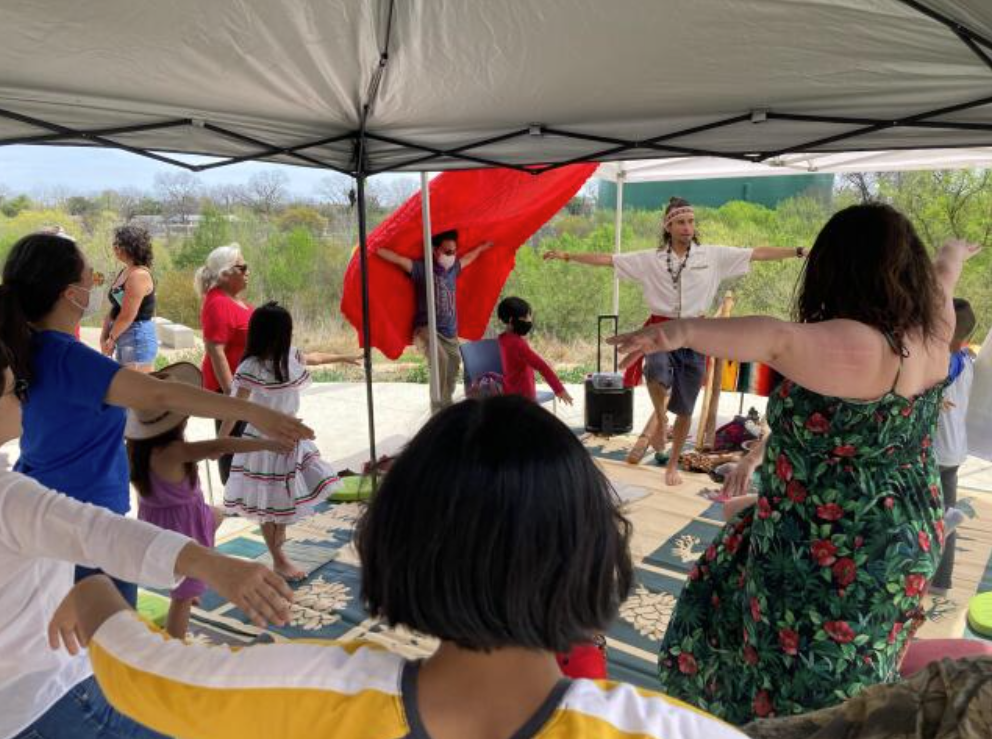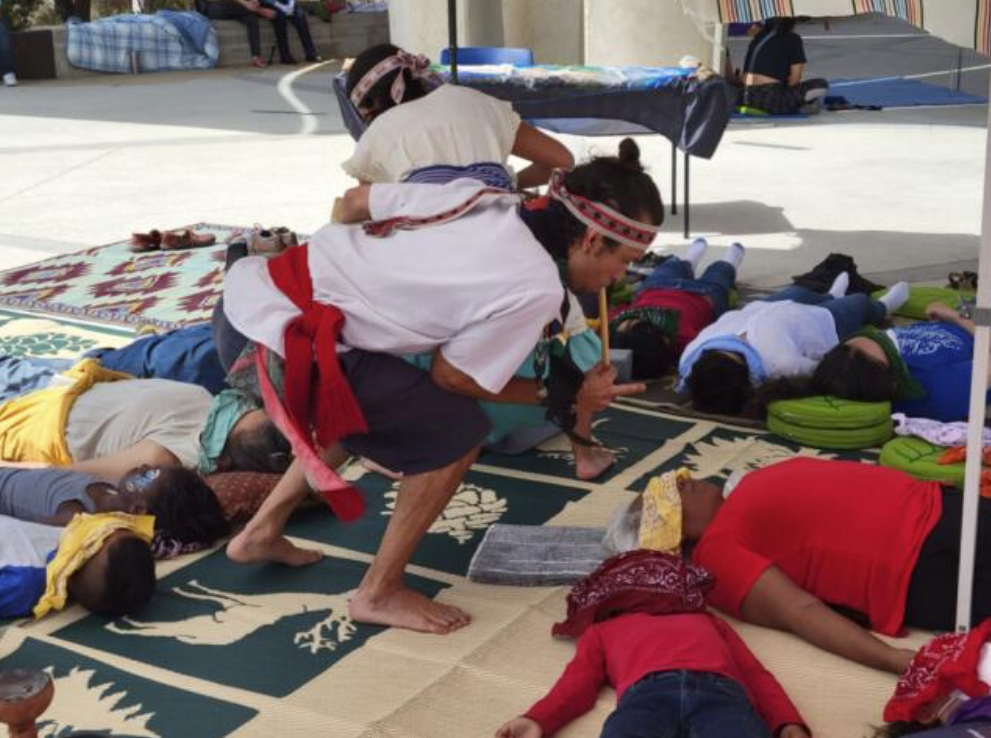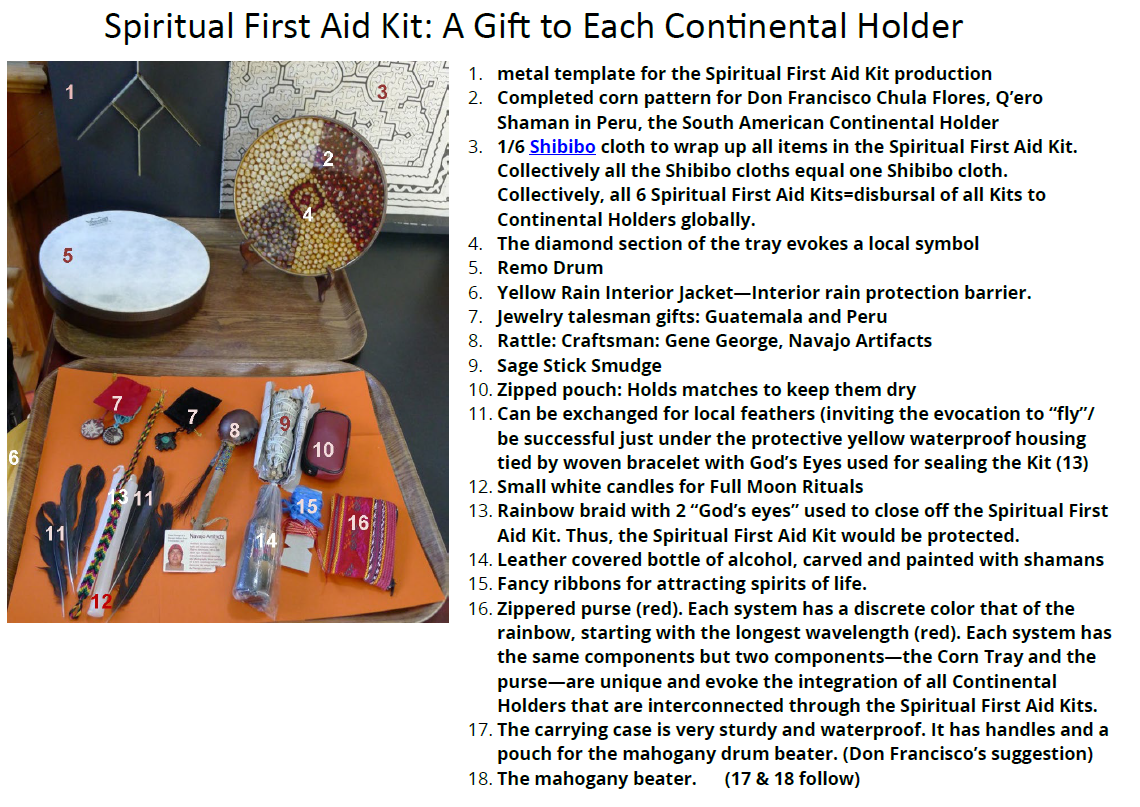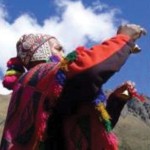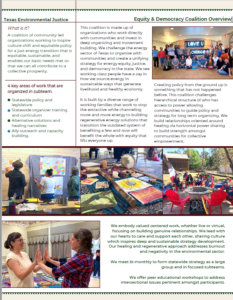“When it comes to climate change, we cannot be radical enough.”
— Sir David Attenborough
At Healing Living Systems (HLS) we are building a global community of people who support each other in expressing gratitude for our lives to the Spirits of Life. Our systemic approach supports global climate stability by seeding global spiritual practices over six continents.
A group of “Continental Holders,” or people with deep relationships with spirit and are recognized as leaders within their communities, have been identified, and each has accepted the mantle of growing local networks of practitioners’ native to their continent. In accepting the mantle of Holder, each Holder additionally agrees to foster the practice of monthly Full Moon Rituals in their community in celebration of Grandmother Moon.
In October of this year HLS will convene a meeting of the Continental Holders to train these individuals in methods to cultivate the soil and foster carbon sequestration within it. We plan to have a week’s time together that boundaries the Harvest Moon. Subsequent to this meeting, each Holder will return to their community and with their community associates identify 15-22 local young people whom they will invite to become climate activists by working the soil to capture CO2 and otherwise increase soil fertility, health and community access to nutritious food. To facilitate this work, the Holders will foster connections among themselves and between the youth and environmental NGOs as well as with activist organizations within their communities.
In addition to training the Holders in carbon capture and soil fertility techniques, bringing the Holders together to meet and collaborate in person will facilitate communication among the Holders about issues of social justice, social equity, soil carbon sequestration, policy outreach, social educational, and community initiatives. The ultimate goal is to create a process that invites all members of the human family to actively participate in creating global climate stability, value the waters, forests, and lands and value each other in collaborating among ourselves to heal our beloved planet.
Seeking and Finding the Continental Holders
The Spirits of Life are experiencing the blatant abuse of natural systems by the human family with specific emphasis on young people (16-40) to actively participate in creating global social justice and equity, climate stability, and cultivating soil organic matter. Through shamanic journeying, Healing Living Systems CEO Theo Ferguson has been called to develop a communication system to enliven our connections with the Spirits of Life. With continuous guidance by the Spirits of Life, Theo has identified Continental Holder(s) on each of the six global continents. A Continental Holder is an individual recognized by the Spirits of Life as a contributing member within their community and someone with a deep relationship to Spirit.
Guided by the Spirits of Life, Theo has traveled (physically) to four continents seeking the Holders to whom the Spirits of Life have directed her. The Holders were Don Francisco Chula Flores, Holder of South America; Janine Andrews, Shaniel and Laquisha Foster, Holders of Australia, Gualter Pambe, Holder of Africa, Gerardo Marin and Vanessa Vezueda, Holders of North and Central America, Sweta Daga and Pallavi Chander, Holders of the Sub-Continent of India. After meeting each Holder and confirming their position and responsibility within their community, Theo offers the Holder a Spiritual First Aid Kit to assist them in performing rituals that incorporate their own cultural practices for honoring the Spirits of Life as well as facilitate global collaboration amongst individuals engaged in climate work.
In his/her/their Home country with an eye to connecting with neighboring countries on their continent by joining international efforts that outreach to social justice, growing networks of climate stabilization and agroecological practitioners. Further, each Holder is invited to cultivate connections with the Spirits of Life by convening monthly Full Moon Rituals to evolve people attuned to social justice and empowered to take on climate and soil organic matter activism.
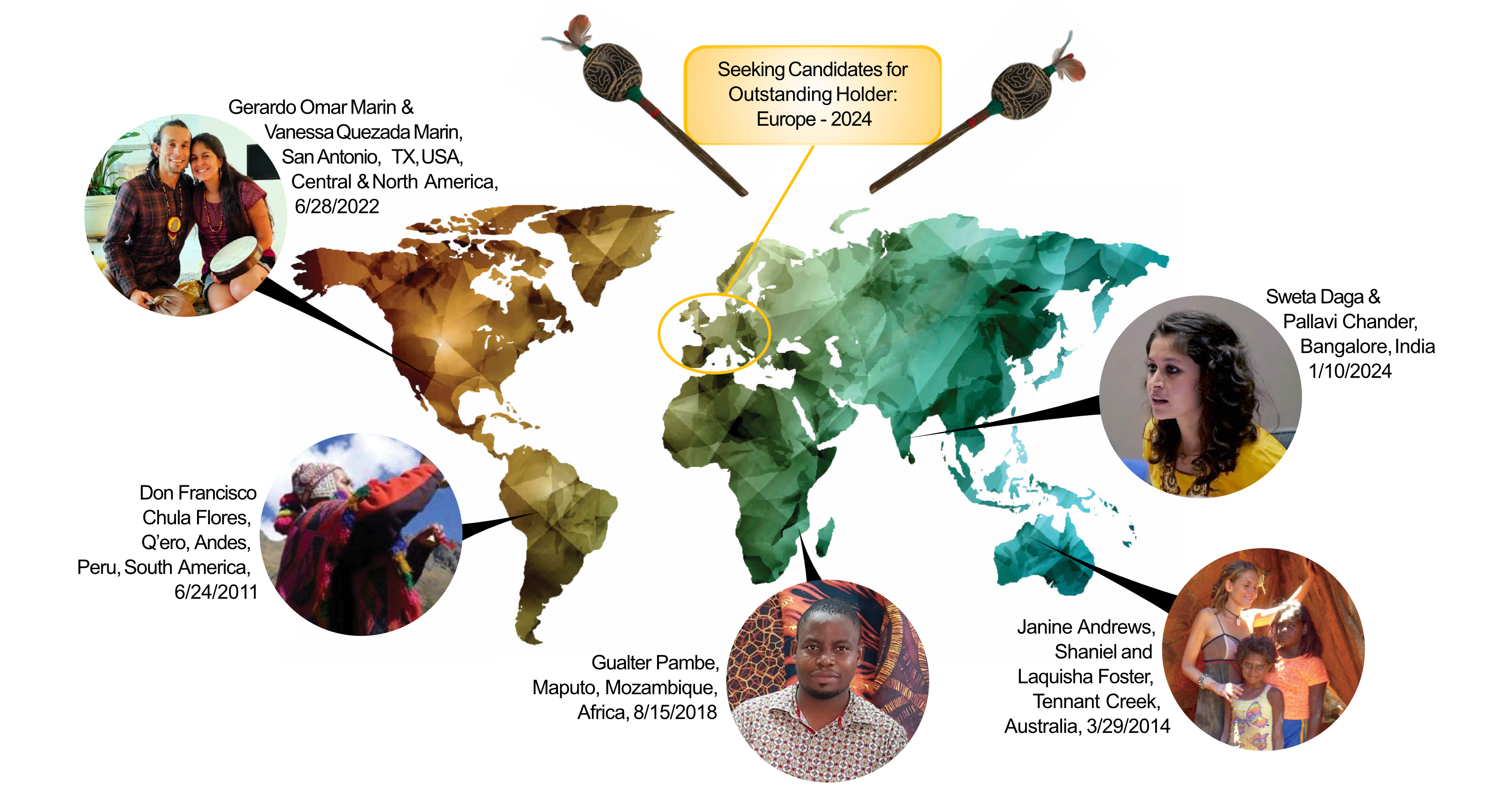
Why We Should Collaborate Together
Adam Smith and the Industrial Revolution did not do us any favors. Industrialization supported another kind of power—money! Among s there are 975 billionaires in the US and 3,194 billionaires worldwide.
Neither these people nor the people in their respective communities benefit from their vast wealth with some great exceptions, one of which is the group action by the millionaires of New York. The millionaires of New York did not like seeing the State in a state of emergency and community members sleeping under overpasses. They banded together and requested higher taxes and a process that would rebalance social and financial imbalances. They produced a letter to then Governor Cuomo, Senate Majority Leader Stewart Cousins, and Assembly Speaker Carl Heastie. Excerpt: “As the very people you are afraid of taxing, let us dispel your concerns: we’re all in. It’s time to Invest in Our New York.” Inspiring! Would that other wealthy folks would collaborate in solving serious social issues where they live.
Our contemporary Human Families lives in very polarized communities–large and small. Globally, the Human Family has created very deep divides, often based on ideas of “we are right” or “fear”, or because the Powers That Be in their homeland exercise a stranglehold on the population to the point that citizens are closely controlled and, in many places have no say regarding their lifestyles. Globally, the policies and cultures of 57 nations are governed by dictators.
It is true that some among us are indeed fearful, and believe that a leader who voices what many among us want to hear will save us. Those among us, who seek a leader to “solve their concerns” and think that “he” could right wrongs as billionaires are investing many millions of dollars in “him” to ensure that billionaires remain in charge.
The US of A was an oligarchy from 1890-1947. We had one remarkably equitable period in our history, from 1947-1979, which began with President Franklin Delano Roosevelt after WWII, with the education of returning troops. As United for a Fair Economy has beautifully presented in “Comparing the Growth of US Family Incomes,” Ronald Reagan and his Economic Recovery Tax Cut of 1981, among other things, cut the highest personal income tax rate from 70% to 50% and the lowest tax rate from 14% to 11% and decreased the highest capital gains tax rate from 28% to 20%. We then returned to an oligarchic market-driven democracy from 2008-to the present. Presidents Obama and Biden have readdressed this trend in their efforts to elevate the middle class, a value emphasized in President Biden’s State of the Union address on March 7, 2024.’

In “Representation for the Ages”, pp. 12-13 in Yes! Magazine, Winter 2024, Karen Dolan of the Institute of Policy Studies points out the qualities of a “liberal democracy.” A liberal Democracy, such as the U.S. ostensibly is, demands that our elected representatives remain responsive to principles and to social movements when those principles are unmet or at risk. As Dolan so effectively elevates: Let’s elect some among us with the demonstrated ability to respond to the needs of the majority of people, expressed through the principles of liberal democracy and democratic social movements. Our local through national governance is based on these principles crafted by our Founders.
This counsel is ever more relevant today as we listen to each other, and gradually chooses cooperative ways of living and working over capitalism,
What’s Wrong? And How Do We to Address These Issues?
Spiritual Challenges
LandBack: The Indigenous Liberation Movement – YouTube
The presentation this link clarifies and elevate the Indigenous position: LANDBACK. In Western, non-indigenous cultures we have lost a sense of being of the land and gratitude to the Spirits of Life. Throughout millennia, indigenous people have never “disconnected” themselves from their places of origin. Even when their land has been appropriated by others through money and/or guns, they have always continued their spiritual practices, and they are ALWAYS integrated into their lands with deep gratitude to the Spirits of Life.
Many people—particularly indigenous people —are taking on societal roles totally new to them because of climate change created by capitalism and greed. When arctic winds that seared the vast braided grasses of the Steppes of Asia impacted the many varieties of ruminants—cattle, sheep, goats, horses, yaks, buffalo, etc., Mongolians’ staple food, ever-present for hundreds and hundreds of years, was gone. Shepherds’ sons became coal miners. The shamans of Mongolia began to enter the political arena because their government began mining their sacred mountain peaks for coal. This was an anathema to the shamans, as their mountains are the homes of the mountain spirits to whom they appeal for aid in their healing practices.
What we can do?
Many among all the diverse communities on Mama Tierra experience a direct relationship with a cosmological, living universe that is integrated into our personal life paths. Many more among us can open up to connections with our living systems and diverse parallel life experiences. We can learn a great deal from indigenous cultures, who never lost their connections with Mama Tierra and remain deeply connected with the spirits of all life.
As with any path, there are many lessons along the way. But the rewards of being connected to the Spirits of Life provide one way to have confidence as we undertake challenges such as halting the extinction of species and other critical issues. By undertaking lessons from alternative (some might say necessary) learning path,- such as the shamanic and the spiritual, we each can, with support, grow our personal relationship with The Spirits of Life and experiences greater service and fulfillment. As LiAn Phoa and Maarten van der Schaaf elevate in Drinkable Rivers: In the past, volcanic eruptions and unfortunate meteor impacts caused mass deaths. Now it is the tiny human, like an infant just learning to walk and constantly falling over, who is poisoning the air and the water, cutting down forests, digging mines, exhausting the soil, destroying mountains, and emptying the oceans. Will we eventually bring about our own demise? Or will we grow up in time? Will we discover how life on earth works and succeed in aligning ourselves with the web of life?
Environmental Challenges
Mama Tierra comes with a full complement of living systems: Our sun brings warmth and photosynthesis through our food; we are just the right distance from our powerful star to enable all life on earth to thrive! We have a moon, whose monthly rhythms move our planetary waters. Forests have evolved to be whole ecosystems and habitats that create oxygen for us to breathe. We are nurtured!
Ecosystems can flourish when we don’t pollute them by overstepping planetary boundaries. During the Industrial Age, we began to suck massive amounts of fossilized vegetation from the earth and convert it into energy to move us around more quickly and to supply heat and power. We did not, however, track the impacts of these fossil fuels on our planet.


Within a few centuries we have created GREAT imbalances in natural systems that had been in balance for hundreds of millions of years. Why? Because we had developed an economy that allowed people to experience a new form of power—money. Gleaning power over others is not new, but gaining power over planetary boundaries is, and we are becoming painfully aware of the outcomes of these practices.
Specific environmental stresses include:
Mono cultures—80% of the 1,500 million hectares of global arable land are mono-cropped, requiring excessive fossil fuels and thus increasing climate extremes. There are many suicides among farmers on the Indian subcontinent, but suicide numbers are lower among the country’s unemployed and its professional workers. Researchers note that growing water-intensive crops on marginal lands without irrigation can place individual farmers at very high risk. Many scientists and advocates argue that farmer suicide rates could be dramatically lowered by access to affordable credit, crop insurance, and improved extension services.
Biofuels and animal feedlots are unsustainable—they produce financial losses and environmental degradation. Example: The waste “chicken litter” from Tyson’s monocropped chickens that “live” in immoveable “barns” is polluting major waterways in Oklahoma. The ruling of the 18 year lawsuit initiated against Tyson’s in 2005 has finally been adjudicated—Headline in Northwest Arkansas Democrat Gazette, January 20, 2023.

In addition to holding bad actors accountable, we need to recognize the truly powerful climate saviors! The Redwoods of the Pacific Coast are climate balancing giants. In Greg King’s book: The Ghost Forest, Racists, Radicals, and the Real Estate in the California Redwoods—documents the “failed experiment” of the corporate ownership of the California redwoods. These corporate holdings need to be bought out in order to restore NOT LOG one million acres of redwoods to be set aside for a generation so that the redwoods can sequester the CO2 as only the old growth and “middle growth” trees—150 years old or so—can do. People of means need to purchase these valuable infrastructure allies to secure them as agents of climate cooling. One path forward could be to work with the Trees Foundation to create collective infrastructure purchase capacity.
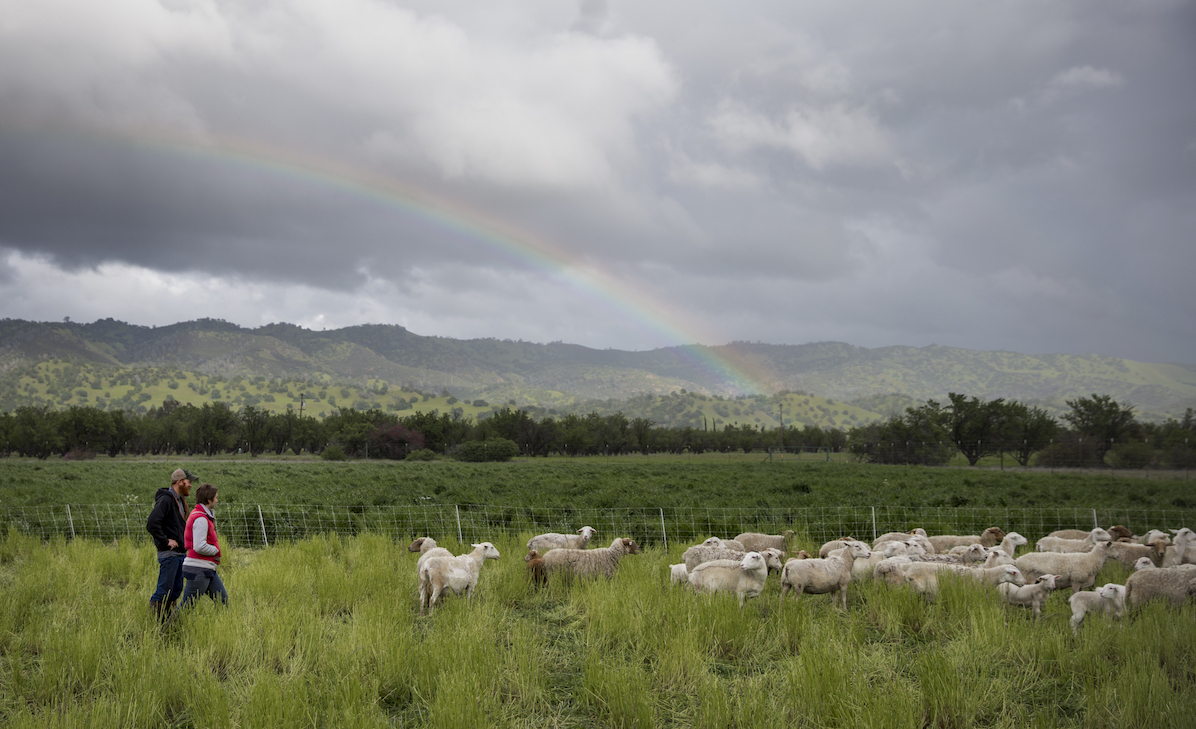
Trees versus grass: Which is the better carbon sink?
By Ralls Eric; Earth.com staff writer.
Researchers from the University of California, Davis have found that grasslands and rangelands are better carbon sinks than forests in present-day California. Years of warming temperatures, fire suppression, and drought have increased wildfire risks – which has turned California’s forests into carbon producers more than carbon consumers.
Trees store much of their carbon within their leaves and woody biomass, while grass stores most of its carbon underground. This means that when a tree catches fire, it releases its stores of carbon back into the atmosphere. But when a fire burns through grasslands, the carbon fixed underground tends to stay in the roots and soil.
Our current path of global carbon emissions dictates that grasslands are the most viable net carbon dioxide sink through 2101, as they’re able to store carbon even during extreme drought conditions.
The UC Davis study doesn’t suggest that grasslands should replace forests or diminish the many benefits of trees. Instead, it states that, conserving grasslands and promoting rangeland practices that lead to reliable rates of carbon sequestration may help the California’s emission-reduction goals.
Restoring degraded tropical forests generates big carbon gains
Sabah is a Malysian state in the northern part of Borneo.
Researchers found that forest areas that underwent active restoration recovered 50% faster from 2.9 to 4.4 tons of above ground carbon per hectare per year.
Dipterocarp seeds are collected in primary forest and grown in nurseries to provide sufficient planting material for large-scale restoration efforts. Credit: Michael O’Brien / SEARRP
More than half of the world’s aboveground carbon is stored in tropical forests, the degradation of which poses a direct threat to global climate regulation. Deforestation removes aboveground carbon in the form of trees, reducing the size of global carbon stocks in the process. Once forests are degraded, they are often perceived to have little ecological value, despite evidence of their ability to continue to provide important ecosystem services and to store significant amounts of carbon.
This misconception has marked degraded forests as prime candidates for full conversion to agricultural plantations, but recent research challenges this idea and offers a promising alternative—forest restoration is a more sustainable solution capable of both replenishing carbon storage and preserving biodiversity. While this concept isn’t new, the adoption of restoration practices has been impeded by uncertainties over its effectiveness.
Now, an international team of scientists from 13 institutions, including researchers from the Arizona State University Center for Global Discovery and Conservation Science (GDCS), has provided the first long-term comparison of aboveground carbon recovery rates between naturally regenerating and actively restored forests in Southeast Asia. The researchers found that restoration practices improved carbon storage recovery by more than 50% compared to natural regeneration. The paper was published today in Science.
“Not long ago, we treated degraded tropical forests as lost causes. Our new findings, combined with those of other researchers around the world, strongly suggest that restoring tropical forests is a viable and highly scalable solution to regaining lost carbon stocks on land,” said co-author and GDCS director Greg Asner.
The researchers studied an area of tropical forest in Malaysian Borneo, where agricultural activities have caused soaring deforestation rates for years. The study site was heavily logged in the 1980s and subsequently protected from further logging or conversion to plantation agriculture. To assess forest recovery, Asner and his team mapped the area using their Global Airborne Observatory, equipped with powerful lasers and spectrometers, in 2016. The resulting maps revealed the location and amount of carbon stored above ground across thousands of hectares of forest.
The diverse rainforest in Sabah. Credit: Sol Milne, University of Aberdeen
Areas left to regenerate naturally recovered by as much as 2.9 tons of aboveground carbon per hectare of forest each year, highlighting the ability of degraded forests to recover if protected from full agricultural conversion.
First author Chris Philipson, of the University of Dundee and the ETH Zurich, said, “This quantitatively confirms that if degraded forests get effective protection, they can recover well naturally.”
Even more importantly, the researchers found that forest areas that underwent active restoration recovered 50% faster, from 2.9 to 4.4 tons of aboveground carbon per hectare per year. Restoration methods included planting native tree species, removing tree-climbing vines, and thinning vegetation around saplings to improve their chances of survival. Full ACD recovery in a naturally regenerating logged forest would take around 60 years, while recovery for an actively restored forest takes just 40 years.
This is the first time that a long time-series dataset has been used to demonstrate that active restoration helps the regeneration of forests after logging and other disturbances. However, the current carbon price is still not sufficient to pay for the cost of restoration, limiting the impact that this approach can have on the climate change crisis. However, new carbon offset programs could potentially fund these restoration costs.
“Science has laid out a clear pathway for land managers. We now must turn to the economics of the problem to generate the support to pursue these solutions,” said Asner. “Restoring degraded tropical forest works to mitigate climate change, and it saves biodiversity along the way.”
There is no simple lifespan of the world’s soils.
What do we know about the state of the world’s soils?
Although there is no single metric for estimating the “lifespan” of a soil, a recent study by Daniel Evans and colleagues gave us a first assessment of the range of soil lifespans across the world. Soils are complex and have a range of properties from nutrient balance to density to structure. The best proxy – and the metric that Daniel Evans and his colleagues used – was net erosion rates of the crucial topsoil layer, the topmost layer which is around 30 centimeters thick [in reality, this thickness varies from soil to soil, but 0.3m is the most adopted figure for this upper productive layer]. Crops need this layer to grow: it’s where the carbon, water and nutrients get stored.5
If soils are left without a cover crop, the CO2 an important soil component, evaporates into GHG (Greenhouse Gases) that blanket the earth, holding the solar heat captive. The climate was in balance for millions of years at 350 ppm GHG—Greenhouse Gases, and now we are at 420.61ppm.
What we can do:
- Support Old-Growth Redwoods, 2nd Growth Redwoods over 150 years old and Old Growth Sequoia, all with the ability to really pull down CO2.
- Keeping Ecosystems Healthy: Some of the Inflation Reduction Act of 2022 goes toward infrastructure development. Salmon are the best nutrition for our Redwoods, so we need to bring them back.
Salmon are the best nutrition for redwoods so we need to heal our riparian habitats—rivers and streams—to bring the salmon back.
A Last Best Hope for Coho in the Russian River by Alastair Bland, Bay Nature, January 2024
While many passersby likely see Willow Creek, a feeder into the Russian River, Sonoma County, California, as a pristine recreational getaway, John Green sees a watershed in distress.
“Under natural conditions, there wouldn’t be one single-thread channel,” says Green, a fluvial geomorphologist and a lead scientist with the Gold Ridge Resource Conservation District (RCD). Plotting a retrofit, he waves his hand over this imagined floodplain—where high winter flows would naturally spill outward, creating rich wetlands and prime foraging grounds for small fish. “It would probably be a narrower channel that was not as deep,” he says, “and there would be all kinds of tributary channels coming in, and there would be areas that got inundated more frequently.”

Some sections of Willow Creek have become impassable. (Alastair Bland)
Willow Creek was once a prolific salmon stream but today, in its current form, is nearly fishless.
The same story can be told of most tributaries of the 110-mile Russian River, in which a long history of watershed abuse, including logging of old-growth redwood forests, has stripped the system of its fish habitat and sent anadromous salmonid numbers careening toward zero.
$491 million is to be doled out over the next five years to marine and aquatic habitat-restoration projects around the country from the Bipartisan Infrastructure Law. NOAA and the Office of Habitat Conservation’s Restoration Center are handling a catalogue of initiatives from Santa Cruz to Humboldt County (CA) aiming at reviving coho salmon and steelhead habitat.
We must act in every possible way to bring down the atmospheric GHG to 350 ppm (Greenhouse Gases). Let us not forget that we are all a part of the earth’s environmental systems. Through the process of capturing carbon in the soil, we can build more organic soil matter and thus increase the carrying capacity of the soil and ensure many more harvests of nutrient-dense food.
- “Can we flip urchin barren back into kelp forests?” “We saving an ecosystem.”
Without keystone species, ecosystems could fail or drastically change. As an example of the interconnectedness of species, sea otters and sea stars are especially important in maintaining sea urchin populations, which directly increases the health of kelp forests.
- Under major CO2 drawdown based on 10 years of carbon farming practices research:
What has The MARIN CARBON PROJECT learned:
Social Challenges:
- Oxford’s Our World In Data project investigates the figures behind the often-heard statistic that the world has only 60 harvests left because of erosion. It concludes that although this figure is not correct, soil erosion is a problem. Globally, 16% of soils are estimated to have a remaining lifespan of less than 100 years. Half of the soils are expected to last over 1000 years; and one-third are expected to last over 5000 years. The project recommends cover cropping, minimal or no tillage, and contour cultivation to extend soil lifespan.
- Land succession, aging farmers, and expensive land costs keep new farmers from farming. Use of land for the production of crops intended to be sent across the world is called Contract Farming. Global social risks of this practice include: disparity of income, global health pandemics, and a situation where local people have no access to food that is grown locally but instead feeds the people of other nations.
- Land grabbing: From Fian International
What We Can Do: younger members to celebrate their own agency, choose their own
- Social justice through cooperatives and collaborations enables us all to evaluate and grow cooperative communities in which we participate in our own challenging enterprises, thus enabling each other—and especially our younger members—to celebrate our own agency and personal power to choose our own paths going forward.
- Food sovereignty can be hard won. It is defined as the right of peoples – especially small rural farmers – to define their own agricultural and food systems. The food sovereignty movement demands that the policies and mechanisms involved in the production, distribution, and consumption of food focus on creating ecologically sustainable systems and healthy lives for people, rather than profits for corporations. The concept of food sovereignty was developed by Via Campesina in 1996 during the World Food Summit and represents an alternative to neoliberal economic policies. Via Campesina is an international movement bringing together millions of peasants, small and medium-size farmers, landless people, rural women and youth, indigenous people, migrants and agricultural workers from around the world. While “peasant” can carry negative connotations in US culture, it is the preferred term by individuals in Via Campesina.
Financial Challenges
The pernicious management practice of “maximization of shareholder value” and competition from industrial processed food producers cause both global health impoverishment and a huge tax burden on those who are least able to bear it. A majority of large corporations file in the state of Delaware and operate their enterprises out of the Caribbean, thus paying NO taxes. This polarization of wealth increases the number of billionaires among us, who own more financial assets than many nations, while many among us do not have food to eat, a place to sleep, or a livelihood that will sustain ourselves and our families.

What we can do:
President Biden in his State of the Union Address on March 7, 2024, addressed corporations paying their fair share of taxes, which they have not done since 1979. But he has a Republican House of Representatives. What to do? A) CONTACT HIM and stress that all of US are paying for THEIR billions of returns; and B) ensure that we elect Biden, as well as a Democratic House of Representatives, (AND SENATE!) so Biden will have the votes and US Senate support to sign effective legislation into law.
In addition to challenging capitalism, we must investigate other economic systems. The Doughnut Economy Action Labs offers one alternative:

Those among us who realize “I have enough” are able to work with those who DON’T have enough. Keeping “MONEY MOVING” is one of many critical modalities, in addition to developing enterprise cooperatives, condominiums and cooperative housing; community associations and collaboratives; and the offering of assistance, such as shared gifts of food or labor with our communities, neighbors, families, and dear ones near and far while uplifting shared beauty, vitality, health and love.
Governance Challenges
Governmental challenges include disparities of income, such as vast differences between between the lowest-paid employees and highest, and inequity in male and female pay rates for the same jobs. Corporate executives often have 600 times the hourly pay of the mail clerk. Some corporate executives receive $1,000 a minute, the now retired former CEO of Wells Fargo, John Stumpf.
What we can do:
We must consolidate efforts to evaluate and establish owner cooperatives and shareholder ownership enterprises.
Access to organic food grown using soil-saving practices is an important step in ensuring those among our community and cities collaborate with these practices. All of the arts—music, dance, theater, sports—need support. It’s not about being rich! It’s about having enough, being healthy, and enabling each other to share joyous lives.
Technological Challenges
Technological tools can be powerful when they serve and are accessible to all, but not when sold as an end unto themselves. Artificial intelligence can be useful, but people still need to think, make and perform. It’s important to celebrate each other while putting these amazing breakthroughs in context.
What we can do:
Our current society has a propensity to want the latest tech tools and toys. We need to ensure these tools are serving broad social and scientific applications. We need to remember that we can do many things without “the latest tech tools and toys.”
Click on image to enlarge or use the button below to download the Spiritual First Aid Kit PDF.
After Theo returned from the trip to Mt. Salkantay in the Andies, Theo wanted to know how Continental Holder Don Francisco Chula Flores was doing with his Spiritual First Aid Kit. There were no drums in the Andes. It was too wet. Theo journeyed to Don Francisco to see how he was doing. Don Francisco was beating the Remo drum with a stick. Don Francisco used a stick to beat on the drum. That’s how drumming started: a hide pulled over a frame beaten with a stick. Ah Ha! Of course, the system needs a sleeve to “house” the beater.. Theo made ensured that any Spiritual First Aid Kit going forward would have a sleeve to hold the mahogany beater.
People creating rituals
Gratitude to Heal the Climate on the Full Moons
Who are the holders?
What we can do together?
Gather |
Gather your family and friends on Full Moons, allowing our aggregate offering to create an interconnected global pulse. | |
Make |
Make instruments and ritual objects to honor the Spirits of Life. | |
Send |
Send your pictures of your Full Moon Event to: http://www.healinglivingsystems.org/systems-to-heal-the-climate/. | |
Host |
Host us on your organization’s website to aggregate our shared goals. | |
Open |
Open your spirit and heart and offer gratitude for your life and heal blessed Mother Earth. We serve the seventh generation. |

Offering gratitude to the Spirits of Life could be something an individual could do monthly on full moons, or daily. A shamanic councilor in Austria, Roland Urban, shared this story:
A Tibetan Healer has this practice:
When the Healer rises in the morning, he begins by heating his tea water. When the water is hot and the brew is just right, he dedicates the first cup of tea to the Spirits of Life by invoking a blessing as he pours the freshly made tea on the ground outside his dwelling.
Offer up gratitude for your life – Create an Energetic Healing Network.
What difference would it make if we collaborated together?

When a rhythm sustains, a shift is maintained. Through the performance of monthly Full Moon Ritual, a long-standing rhythm is sustained, allowing the Spirits of Life to participate with each of us as we grow our own awareness relating to our own capacities to participate in CO2 drawdown from the Greenhouse Gases (GHG). We are now at a concentration of 419ppm (parts per million) of GHG. BUT WE ARE AT WAR! Going to war for personal power is maladjusted and despicable. Nonetheless, we must continue to draw down the concentration of GHG in the atmosphere to 350 ppm. We must join the Spirits of Life in supporting all the great works undertaken by scientists, politicians, policy makers, economists and financiers, entrepreneurs, activists, spiritually minded people, artists, and all who care deeply about our planet growing in beauty and health by doing everything we can to bring the Greenhouse Gases in the atmosphere down to 350 ppm!
Mountains and Sacred Spaces empower shamans, facilitators, and groups of people participating in Full Moon Rituals. The opportunity is to request the Spirits of Nature, practitioners and the whole group involved in the Full Moon Ritual to connect with the Full Moon and the Spirits of Nature to experience connectivity among each other and oneself. As Ritualists begin to feel that interrelationship they can be moved to investigate and take on ways to draw down CO2 and methane as they cultivate their focus and hone their skills.
An Environmental Defense Fund spokesperson stated: “Some living systems such as Forests net our biggest drawdowns and cover a third of all the land on earth. They provide habitat for 80 percent of terrestrial species and livelihoods for 1.6 billion people. On top of all that, they are powerhouses for carbon sequestration, absorbing as much as 30 percent of our carbon emissions. (Only the oceans can rival that.)” We must take care that in-tact forests have the energy to fight blights such as the pine beetle that have moved northward and now thrive in northern warmer regimes. They are decimating great swaths of pine forests.
We can capture CO2 and methane in the soil and enhance the soil organic matter that provides nutrient dense food for many people. Both forests and soil capture CO2. This alliance with the moon and other sacred spaces inspires us to become ever more aware of all the way we can remove CO2 and methane bound in Greenhouse Gases (GHG) and enhance the soil organic matter thus adding nutrients to the soil and enhance the nutrient value of the food we eat. The Marin Carbon Project is a leader in capturing carbon in the soil by distributing as little as ¼ of an inch of compost across range and farmland that then draw down a significant amount of carbon.
Full Moon Rituals iterate a rhythm over time. The practice of growing a rhythm of gratitude and consciousness on Full Moons expands homo sapiens’ experience to be both sensitive to all beings around us, allow us to understand the implications of 419 ppm and move us to take on our discrete roles in our respective lives to heed the call to “Be present! Be wholly engaged!” and commit to healing the world as part of our lives’ experience.
Systems to Heal the Climate’s Call
Systems to Heal the Climate’s Response
The Full Moon Healing Action Network (FMHAN)
In North and Central America, Facilitators Gerardo Omar Marin and Vanessa Quezada coordinate communication and outreach events through their organization, San Arte Healing & Cultura Clinic in San Antonio, Texas. Through Full Moon Rituals, participants ally with the Spirits of Life on full moons to grow gratitude from the human family to all natural systems in our shared goal to understand how best to draw down carbon and sequester carbon in the soil. Initially FMHAN rituals were held monthly. Subsequently, the diverse associates in Texas, California, Guatemala, Haiti, Honduras, and elsewhere began to hold their own Full Moon Ritual events and sent pictures to Gerardo and Vanessa for HLS’s website. Some of these ritualists, whose life philosophies are not based on capitalism, found it challenging to access the necessary equipment to participate in Zoom meetings (during COVID). They choose to continue to live as their ancestors have lived for millennia in their rural homes connected to all of life through deep relationships with nature. Each participates in Full Moon Rituals and each, in their own way, sought to work on drawing down carbon—farming, growing soil organic matter. The rest of the human family can learn to be part of the land in which they live from them and develop a balance that includes deep gratitude to the Spirits of Life.
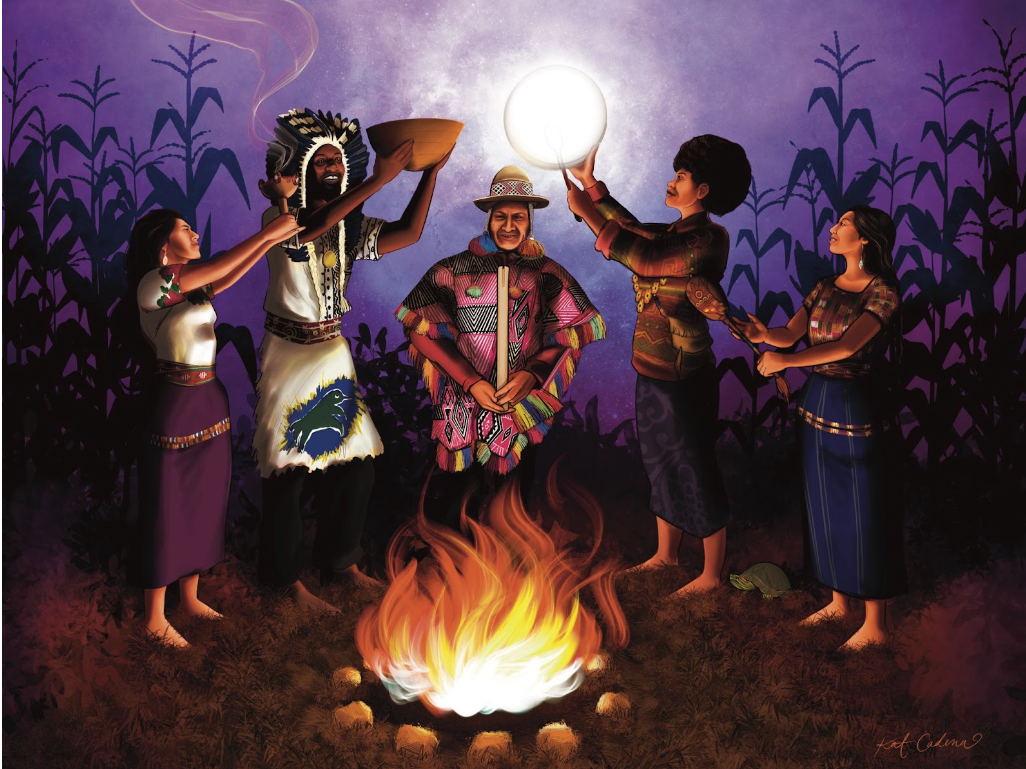
Full Moon Healing Action Network
Q1 2024
Click on image or use the button below to view and download the Full Moon Action Network 2024 Quarter 1 PDF.
Full Moon Healing Action Network - Q1, 2, 2022
Click on image or use the button below to view and download the Full Moon Action Network 2022 Quarter 1 & 2 PDF.
Intergenerational Strength at Fuerza Unida Women’s Garment Collective Leadership Center
Full Moon Weekend January 2022 Circle:
- Moving through Grief and Despair
- Rebuilding our connection
- Stress relief and deep restoration sound Healing w/ Gera
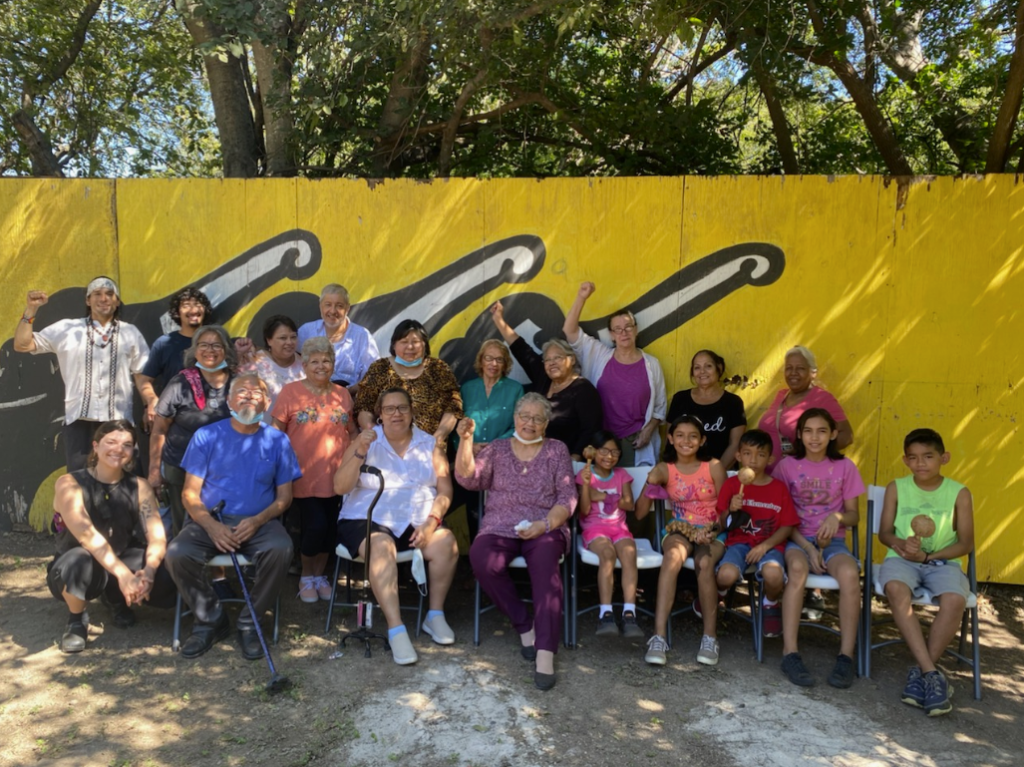
Community Social Justice Artists Grief Healing at the Esperanza Center for Peace and Justice
Full Moon, February 2022
With ritualist Erica Casasola & Anel Flores
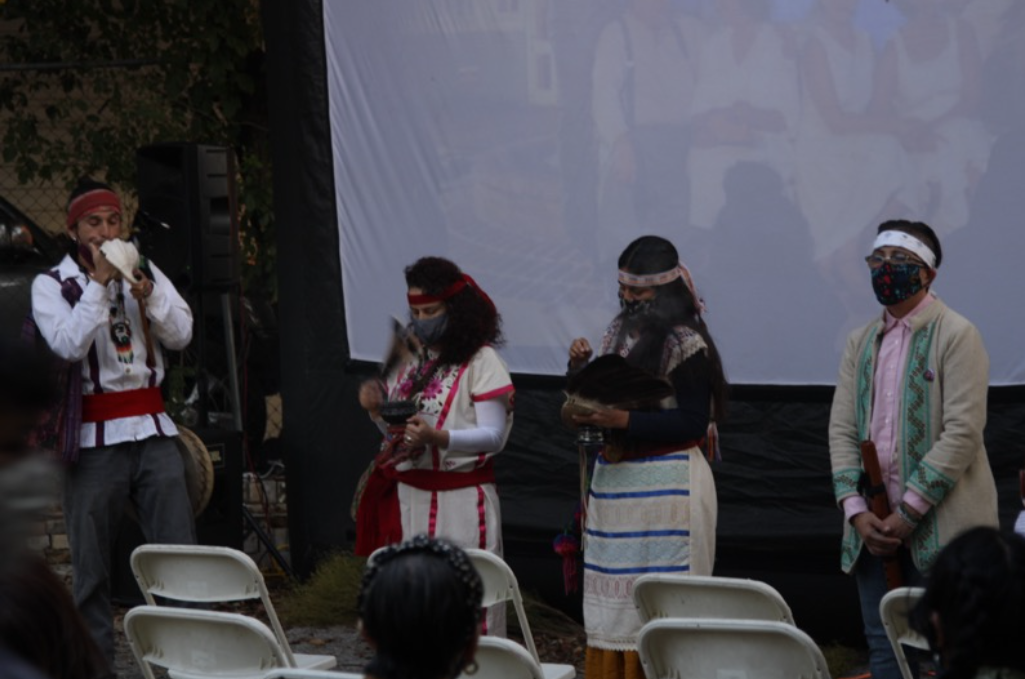
Intergenerational Community Power Event
Healing ourselves to heal Mother Earth
3 phases:
- Therapeutic movement
eagle, wolf, and hummingbird dance - Breathework for nervous system repair
- Sound Healing Power up for regeneration
2 prayers song jam sessions to strengthen
Mama Earth climate healing, balance, and harmony
Confluence Park
Close to March Full Moon
